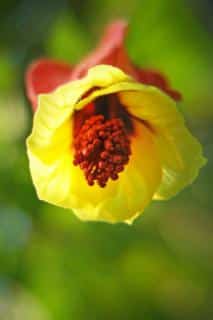

Abutilon, also called room maple, is a very beautiful plant that blooms from spring to fall. Caring for it is easy.
Name – Abutilon
Family – Malvaceae (mallow family)
Type – shrub
Height – 10 feet (3 meters)
Exposure – full sun
Soil – well-drained
Foliage – evergreen
Flowering – April to October
The planting phase of an Abutilon shrub is an important part of the life cycle of your plant because it sets the stage for settling in, growth and blooming.
Preferably in spring for outdoor growing, even if this is only possible in rather warm climate zones.
Abutilon maple shrubs are vulnerable to freezing and to drafty spaces.
In our regions, Abutilons are particularly well adapted to growing in pots. If so, use a “horticultural” mix designed for indoor plants.
Pots are perfect for this shrub, but it is necessary to bring it indoors for the winter. Choose a cool and airy place. This will make spring blooming even more beautiful!
To enhance the blooming and growth of your Abutilon, prune at the end of winter or start of spring. Never prune more than ⅓ of the stems.
Many common bugs attack this kind of plant, such as red spider mite or aphids.
 Abutilon are very beautiful shrubs that are native to Chile, in South America. They are plants that undeniably bring a touch of exotic colors to any garden.
Abutilon are very beautiful shrubs that are native to Chile, in South America. They are plants that undeniably bring a touch of exotic colors to any garden.
There are over 120 different species of Abutilon. Some of them look like grasses, others are closer to vines or shrubs. In all cases, flowers are very appealing and, sometimes, leaves are surprising, too.
Together with hollyhock, tree mallow and hibiscus, Abutilon is part of the large mallow family.
Among the commonly grown or interesting cultivars are the following:
Mulch made from cocoa hulls is perfect for Abutilon. Keeping their base cool favors growth.
is it ok for red lucky lantern to lose all of its leaves. There are new ones at very base of plant. Should I trim off other branches with no leaves.